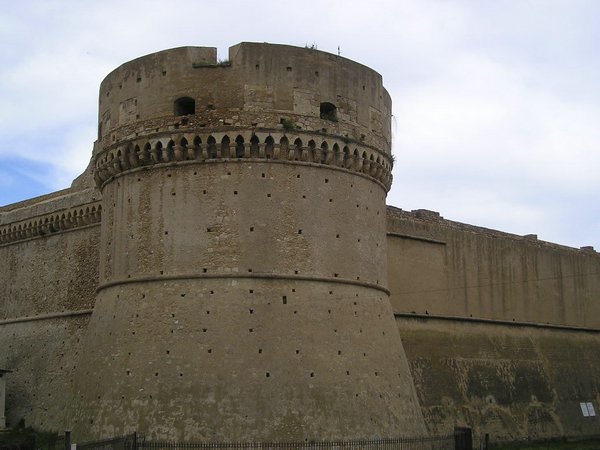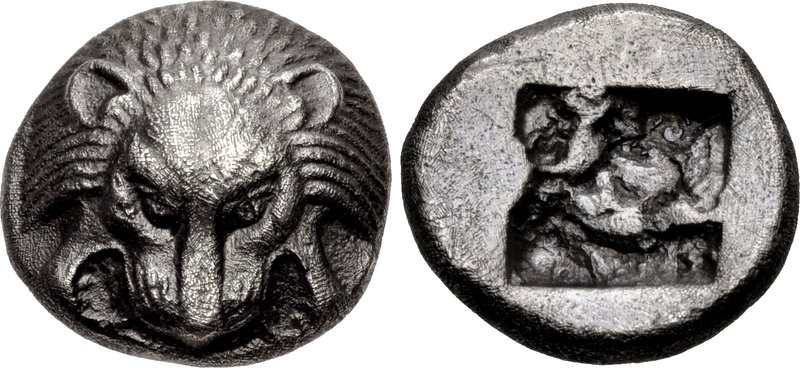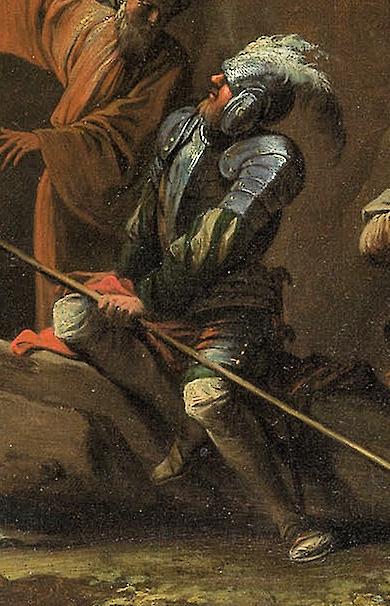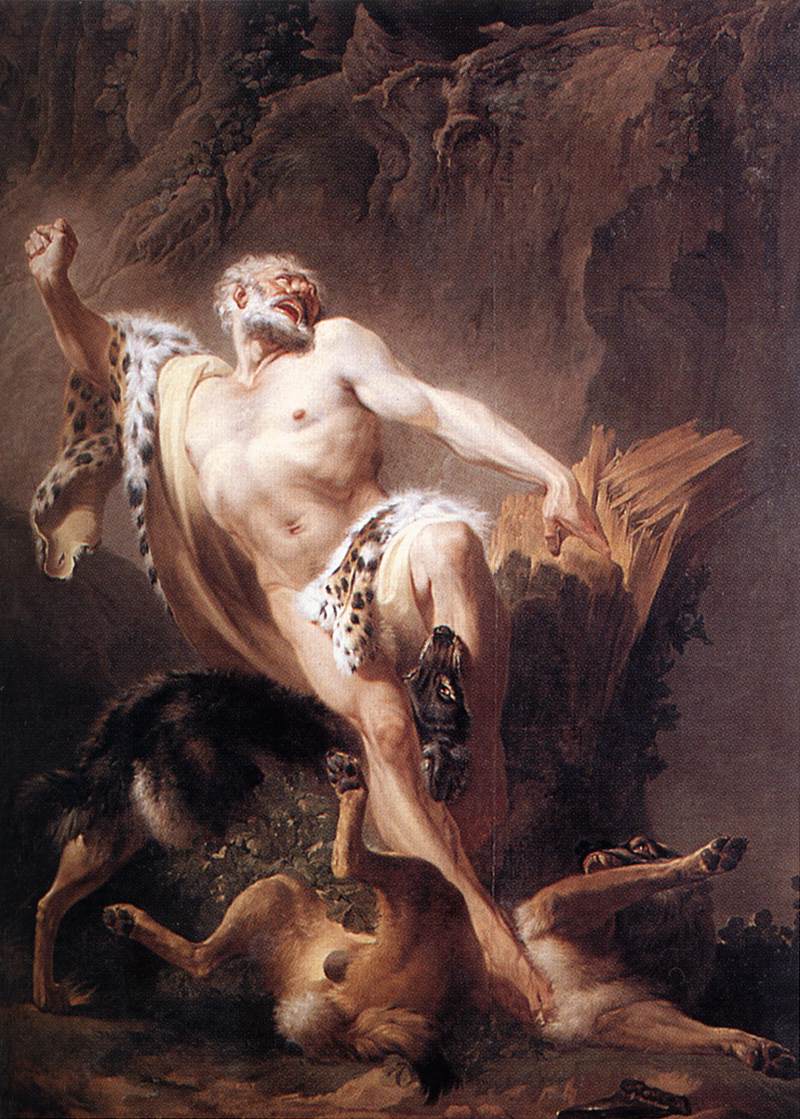|
Democedes
Democedes of Croton (; el, Δημοκήδης), described in ''The Histories of Herodotus'' as "the most skillful physician of his time". Democedes's background Democedes was a Greek physician and a member of the court of Darius I. He was born in Croton, in southern Italy. His father was Calliphon, a priest and physician at Croton at the time of Pythagoras. His first position as physician seems to be in civil service of Athens and Aegina. Later he entered service under Polycrates. In 522 B.C., Polycrates, his entourage, and Democedes were all captured as Lydians by Oroetes and sent to Susa. Democedes's travels Herodotus describes the journeys of Democedes with much detail. Services rendered to Darius and Atossa Darius once sprained his ankle while he was hunting, and his Egyptian doctors could not help his ankle. However, Democedes was able to heal his ankle, and he was thereafter given great esteem. The court regarded his actions highly enough that he was able to eat in the ... [...More Info...] [...Related Items...] OR: [Wikipedia] [Google] [Baidu] |
Crotone
Crotone (, ; nap, label= Crotonese, Cutrone or ) is a city and ''comune'' in Calabria, Italy. Founded as the Achaean colony of Kroton ( grc, Κρότων or ; la, Crotona) in Magna Graecia, it was known as Cotrone from the Middle Ages until 1928, when its name was changed to the current one. In 1992, it became the capital of the newly established Province of Crotone. , its population was about 65,000. History Croton's ''oikistes'' (founder) was Myscellus, who came from the city of Rhypes in Achaea in the northern Peloponnese. He established the city in c. 710 BC and it soon became one of the most flourishing cities of Magna Graecia with a population between 50,000 and 80,000 around 500 BC. Its inhabitants were famous for their physical strength and for the simple sobriety of their lives. From 588 BC onwards, Croton produced many generations of winners in the Olympics and the other Panhellenic Games, the most famous of whom was Milo of Croton. According to Herodotus (3.131), ... [...More Info...] [...Related Items...] OR: [Wikipedia] [Google] [Baidu] |
Calliphon Of Croton
Calliphon of Croton ( grc, Καλλιφῶν) (fl. 6th century BC) was a Pythagorean physician. He was apparently the chief priest at Croton and a man of great importance in civic affairs. Hermippus reports that he was an associate of Pythagoras, and he appears in Iamblichus's catalogue of Pythagoreans; thus he is one of the few Pythagoreans who can be dated from the time of Pythagoras. Josephus quotes Hermippus as saying that Pythagoras claimed that the soul of Calliphon of Croton used to remain at his side night and day, and that he used to utter the following advice: not to pass over a place where his donkey had stumbled, to drink only of clear fountain water, and to speak ill of no man. Herodotus Herodotus ( ; grc, , }; BC) was an ancient Greek historian and geographer A geographer is a physical scientist, social scientist or humanist whose area of study is geography, the study of Earth's natural environment and human society ..., in telling the story of the phy ... [...More Info...] [...Related Items...] OR: [Wikipedia] [Google] [Baidu] |
The Histories Of Herodotus
The ''Histories'' ( el, Ἱστορίαι, ; also known as ''The History'') of Herodotus is considered the founding work of history in Western literature. Written around 430 BC in the Ionic dialect of classical Greek, ''The Histories'' serves as a record of the ancient traditions, politics, geography, and clashes of various cultures that were known in Greece, Western Asia and Northern Africa at that time. Although not a fully impartial record, it remains one of the West's most important sources regarding these affairs. Moreover, it established the genre and study of history in the Western world (despite the existence of historical records and chronicles beforehand). ''The'' ''Histories'' also stands as one of the earliest accounts of the rise of the Achaemenid Empire, Persian Empire, as well as the events and causes of the Greco-Persian Wars between the Persian Empire and the Polis, Greek city-states in the 5th century BC. Herodotus portrays the conflict as one between the fo ... [...More Info...] [...Related Items...] OR: [Wikipedia] [Google] [Baidu] |
Atossa
Atossa ( Old Persian: ''Utauθa'', or Old Iranian: ''Hutauθa''; 550–475 BC) was an Achaemenid empress. She was a daughter of Cyrus the Great, and a wife of Darius I. Name The name "Atossa" (or "Atusa") means "bestowing very richly" or "well trickling" or "well granting". Atossa is the Greek ( grc, Ἄτοσσα) transliteration of the Old Persian name ''Utauθa.'' Her name in Avestan is ''Hutaosā''. Life Atossa was born in . She was eldest daughter of Cyrus the Great; her mother may have been Cassandane. According to Greek sources she married her brother Cambyses II after her father's death, yet it remains problematic to determine the reliability of these accounts.Brosius, Maria (2000). "Women i. In Pre-Islamic Persia"Archived copy Encyclopaedia Iranica, Vol. London et al. Archived frothe originalon 2020-03-13. Retrieved 2019-09-21. According to Herodotus, Cambyses supposedly married two of his sisters, Atossa and Roxane. This would have been regarded as illegal. H ... [...More Info...] [...Related Items...] OR: [Wikipedia] [Google] [Baidu] |
Darius I
Darius I ( peo, 𐎭𐎠𐎼𐎹𐎺𐎢𐏁 ; grc-gre, Δαρεῖος ; – 486 BCE), commonly known as Darius the Great, was a Persian ruler who served as the third King of Kings of the Achaemenid Empire, reigning from 522 BCE until his death in 486 BCE. He ruled the empire at its territorial peak, when it included much of Western Asia, parts of the Balkans (Thrace– Macedonia and Paeonia) and the Caucasus, most of the Black Sea's coastal regions, Central Asia, the Indus Valley in the far east, and portions of North Africa and Northeast Africa including Egypt (), eastern Libya, and coastal Sudan. Darius ascended the throne by overthrowing the legitimate Achaemenid monarch Bardiya, whom he later fabricated to be an imposter named Gaumata. The new king met with rebellions throughout his kingdom and quelled them each time; a major event in Darius' life was his expedition to subjugate Greece and punish Athens and Eretria for their participation in the Ionian Revolt. Alt ... [...More Info...] [...Related Items...] OR: [Wikipedia] [Google] [Baidu] |
Polycrates
Polycrates (; grc-gre, Πολυκράτης), son of Aeaces, was the tyrant of Samos from the 540s BC to 522 BC. He had a reputation as both a fierce warrior and an enlightened tyrant. Sources The main source for Polycrates' life and activities is the historian Herodotus, who devotes a large section of book 3 of his '' Histories'' to the rise and fall of Polycrates (3.39-60, 3.120-126). His account was written in the third quarter of the 5th century BC, nearly a century after Polycrates' death, was based mostly on oral traditions and incorporates many folk-tale elements. Furthermore, Herodotus creatively shaped his account of Polycrates in order to make general moral points and to comment on the imperialism of the Athenian empire in his own day. Some poetry from Polycrates' time comments on him in passing and there is a smattering of references to Polycrates in other literary sources ranging in date from the 4th century BC to the Roman Imperial period. These sources preserve u ... [...More Info...] [...Related Items...] OR: [Wikipedia] [Google] [Baidu] |
Oroetes
Oroetus, or Oroetes (Old Iranian: ''Arvita'', Ancient Greek: ''Ὀροίτης''), was a Persian Satrap of Lydia (c. 530-520 BC), during the reigns of Cyrus the Great, Cambyses and Darius the Great, succeeding Harpagus, and being followed by Bagaeus. He is described by Herodotus in the third book of his '' Histories'', where he achieved notoriety for the death of Polycrates, tyrant of Samos: Oroetus became the first satrap recorded as demonstrating insubordination towards the central power of Persia. When Cambyses (ruled 530-522 BC), who succeeded his father Cyrus, died, the Persian Empire was in chaos prior to Darius the Great (522-486 BC) finally securing control. Oroetus defied Darius' orders to assist him, whereupon the Achaemenid nobleman Bagaeus was sent by Darius to arrange his murder. Oroetus in Art File:The crucifixion of Polycrates the tyrant after his capture by the Persians MET DP837539.jpg, The crucifixion of Polycrates the tyrant after his capture by t ... [...More Info...] [...Related Items...] OR: [Wikipedia] [Google] [Baidu] |
Susa
Susa ( ; Middle elx, 𒀸𒋗𒊺𒂗, translit=Šušen; Middle and Neo- elx, 𒋢𒋢𒌦, translit=Šušun; Neo-Elamite and Achaemenid elx, 𒀸𒋗𒐼𒀭, translit=Šušán; Achaemenid elx, 𒀸𒋗𒐼, translit=Šušá; fa, شوش ; he, שׁוּשָׁן ; grc-gre, Σοῦσα ; syr, ܫܘܫ ; pal, 𐭮𐭥𐭱𐭩 or ; peo, 𐏂𐎢𐏁𐎠 ) was an ancient city in the lower Zagros Mountains about east of the Tigris, between the Karkheh and Dez Rivers in Iran. One of the most important cities of the Ancient Near East, Susa served as the capital of Elam and the Achaemenid Empire, and remained a strategic centre during the Parthian and Sasanian periods. The site currently consists of three archaeological mounds, covering an area of around one square kilometre. The modern Iranian town of Shush is located on the site of ancient Susa. Shush is identified as Shushan, mentioned in the Book of Esther and other Biblical books. Name The English name is derived ... [...More Info...] [...Related Items...] OR: [Wikipedia] [Google] [Baidu] |
Mastitis
Mastitis is inflammation of the breast or udder, usually associated with breastfeeding. Symptoms typically include local pain and redness. There is often an associated fever and general soreness. Onset is typically fairly rapid and usually occurs within the first few months of delivery. Complications can include abscess formation. Risk factors include poor latch, cracked nipples, use of a breast pump, and weaning. The bacteria most commonly involved are '' Staphylococcus'' and '' Streptococci''. Diagnosis is typically based on symptoms. Ultrasound may be useful for detecting a potential abscess. Prevention is by proper breastfeeding techniques. When infection is present, antibiotics such as cephalexin may be recommended. Breastfeeding should typically be continued, as emptying the breast is important for healing. Tentative evidence supports benefits from probiotics. About 10% of breastfeeding women are affected. Types When it occurs in breastfeeding mothers, it is known as puer ... [...More Info...] [...Related Items...] OR: [Wikipedia] [Google] [Baidu] |
Milo Of Croton
Milo or Milon of Croton (late 6th century BC) was a famous ancient Greek athlete. He was most likely a historical person, as he is mentioned by many classical authors, among them Aristotle, Pausanias, Cicero, Herodotus, Vitruvius, Epictetus, and the author of the ''Suda'', but there are many legendary stories surrounding him. He was born in the Greek colony of Croton in Southern Italy. He was a six time Olympic victor; once for Boys Wrestling in 540 BC at the 60th Olympics, and five time wrestling champion at the 62nd through 66th Olympiads. Milo kept on competing, even well after what would have been considered a normal Olympic Athlete's prime: by the 67th Olympiad, he would have been over 40 years of age. He also attended many of the Pythian Games. Diodorus Siculus wrote in his history that Milo was a follower of Pythagoras and also that he commanded the Crotonian army which defeated the Sybarites in 511 BC, while wearing his Olympic wreaths and dressed like Hercules in ... [...More Info...] [...Related Items...] OR: [Wikipedia] [Google] [Baidu] |
6th-century BC Greek Physicians
The 6th century is the period from 501 through 600 in line with the Julian calendar. In the West, the century marks the end of Classical Antiquity and the beginning of the Middle Ages. The collapse of the Western Roman Empire late in the previous century left Europe fractured into many small Germanic kingdoms competing fiercely for land and wealth. From the upheaval the Franks rose to prominence and carved out a sizeable domain covering much of modern France and Germany. Meanwhile, the surviving Eastern Roman Empire began to expand under Emperor Justinian, who recaptured North Africa from the Vandals and attempted fully to recover Italy as well, in the hope of reinstating Roman control over the lands once ruled by the Western Roman Empire. In its second Golden Age, the Sassanid Empire reached the peak of its power under Khosrau I in the 6th century.Roberts, J: "History of the World.". Penguin, 1994. The classical Gupta Empire of Northern India, largely overrun by the Huna, ended ... [...More Info...] [...Related Items...] OR: [Wikipedia] [Google] [Baidu] |
Ancient Crotonians
Ancient history is a time period from the beginning of writing and recorded human history to as far as late antiquity. The span of recorded history is roughly 5,000 years, beginning with the Sumerian cuneiform script. Ancient history covers all continents inhabited by humans in the period 3000 BCAD 500. The three-age system periodizes ancient history into the Stone Age, the Bronze Age, and the Iron Age, with recorded history generally considered to begin with the Bronze Age. The start and end of the three ages varies between world regions. In many regions the Bronze Age is generally considered to begin a few centuries prior to 3000 BC, while the end of the Iron Age varies from the early first millennium BC in some regions to the late first millennium AD in others. During the time period of ancient history, the world population was already exponentially increasing due to the Neolithic Revolution, which was in full progress. While in 10,000 BC, the world population stood at ... [...More Info...] [...Related Items...] OR: [Wikipedia] [Google] [Baidu] |








